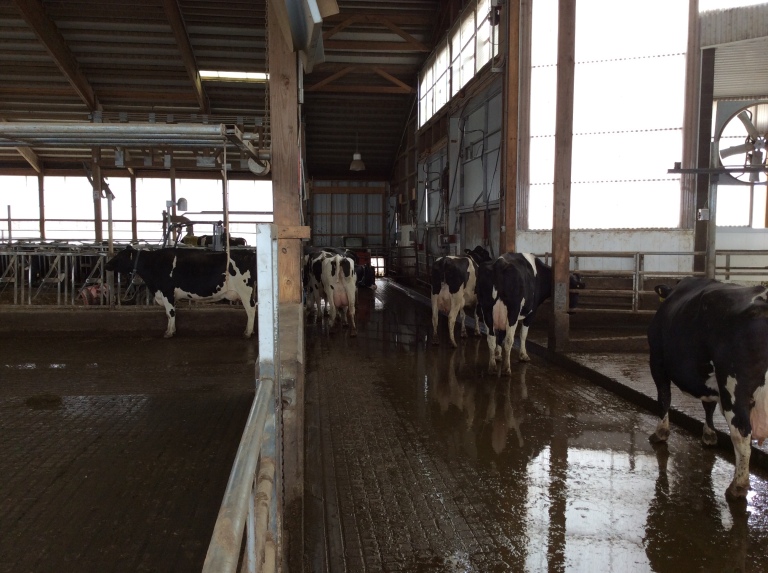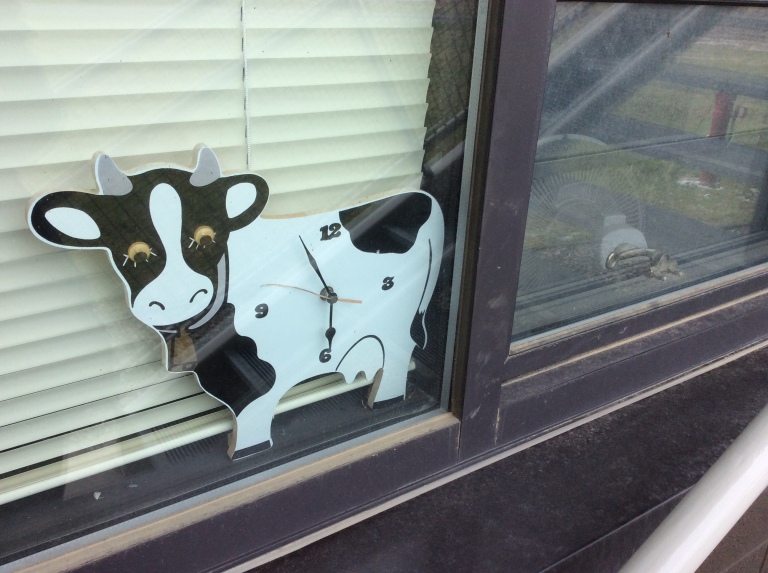KEY POINTS
- Cornell veterinary students interned at Chinese dairy farms to teach workers
- Chinese dairy production has skyrocketed since 2000 with gov’t support
- Demand for milk fell last year, milk prices plummeted
- Chinese dairy farm had to postpone program last year, next year uncertain
- Cornell veterinarians found experience positive
TRAINING PROGRAM
Since 2011, Cornell University’s College of Veterinary Medicine has been involved with professional training programs with Chinese dairy producers, but a recent drop in milk prices means the program’s future is uncertain.
Participants, many of whom have been Cornell graduate students, worked on farms operated by Huaxia Dairy, a dairy farming corporation based about 37 miles east of Beijing.
Anne Borkowski, a fourth-year veterinary graduate student at Cornell who participated in the summer of 2014, said she taught Chinese dairy farm workers and Chinese interns from nearby veterinary schools — some of whom had never touched a cow before — how to handle cows safely, identify diseases and improve workflow efficiency.
“It was not necessarily that different things were going wrong, just more of them going wrong all at once, and some of them were more severe as a result,” Borkowski said.
Consulting for that many workers as a graduate student was an experience she wouldn’t be able to get in the United States, she said.
Charles Shao, a Taiwanese-American entrepreneur who started Huaxia Dairy in 2003, approached Chuck Guard, associate professor of veterinary medicine and director of the Cornell Teaching Dairy Barn, to initiate the relationship between his company and Cornell University.
“Mr. Shao seems sort of like a visionary who had big ideas for his dairy enterprise in China,” Guard said. “He realized that he didn’t have any of the subject matter knowledge or people in his organization that really were expert in dairy systems or management, so he needed help.”

LOWER DEMAND, LOWER PRICES
Because milk prices recently plummeted, however, Huaxia Dairy determined it did not have the resources to continue the training program in 2015, Guard said.
Guard said he is not certain whether the program will take place this coming summer.
A drop in demand for milk in China in 2015 drove international milk prices down, forcing many smaller Chinese dairy farmers to dump milk and slaughter cows.
“The demand in China fell for reasons I’m unaware of, but it was not only for milk products that we sold to China, but for milk products produced in China,” Guard said.
The drop is a sudden reversal after Chinese demand for milk had been growing rapidly between 2000 and about 2013 as more Chinese people entered the middle class and were able to afford dairy.
Even though the majority of Chinese people are lactose-intolerant — meaning they lack the enzyme lactase, which processes the natural sugar in milk — cheese, ice cream and powdered milk are increasingly popular.

GOVERNMENT PUSH
The Chinese government intends to make Chinese-made dairy more appealing to Chinese consumers, who generally prefer the cheaper and healthier dairy products from abroad. For example, American dairy producers broke sales records in 2014 while Chinese dairy was struggling to sell. That same year, the government levied new restrictions on imported dairy products.
One of the reasons Chinese milk costs more is because it is more difficult to obtain animal feed in China because of government regulations, said Alexander Navarro, a second-year graduate veterinary student who participated in the program in 2013.
“In China, the government owns all the land, so that’s a very big difference than the U.S., where almost all the land is privately owned,” Navarro said.

A major milk contamination crisis in 2008 caused about 300,000 children to get sick and killed six infants.
To boost prices to compete with foreign dairy, Chinese farmers contaminated the milk with melamine, a chemical that could make the milk seem to have more protein than it actually did.
A bad reputation of poor quality combined with market volatility has made prospects for smaller Chinese dairy farmers to look dim.
Navarro said dairy production is fairly new to Chinese farmers, but he expects they will learn and improve quickly.
“When they see you’re from another country … they’re really excited to learn from you,” he said. “It really opened me up to doing more international veterinary work because I had such a good experience.”
